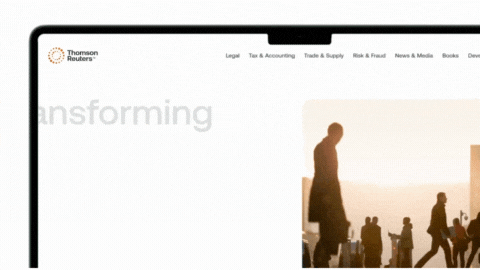Corporate clients regularly push their firms to contain costs, while still demanding the best advice and service possible. As their budgets have tightened in recent years, while matter volume has continued to increase, their internal pressure to get more for less has been intense. As a result, it’s clear that may corporate clients have turned to “downsizing” (or “tiering”) the type of firms they use: assigning more work to mid-market law firms as opposed to large law firms, as a means to control costs without compromising on quality.
Here we look at why this trend is gaining momentum and how mid-sized and smaller firms can capitalize on this opportunity to capture more business from corporate clients.

AI news and insights
Industry-leading insights, updates, and all things AI @ Thomson Reuters
Join community ↗Corporate law departments remain cost-conscious…
The rates charged by law firms have been rising for a decade and last year saw another sharp uptick across all segments, with the biggest increases at AM100 firms. Yet cost-conscious clients are pushing back. Some work is staying in-house, but most clients still have more legal work, and more work requiring the specialized expertise your firm can provide, than they can handle. So, what’s the solution?
Increasingly, one answer seems to be: to give more work to firms that offer exceptional service at a lower cost. Many GCs say they are shifting work to lower-cost firms as part of their cost control strategy, and we can see the reality of this on the ground in figures showing that the rates GCs report paying are not increasing as much as the rates firms report charging, suggesting that some work is moving from more expensive firms to cheaper ones. In addition, while demand for legal services grew by 1.1% across the legal industry last year, AM100 firms posted flat demand growth (0%), the AM200 fared slightly better at 0.6%, and mid-sized law firms enjoyed 2.4% growth in demand for their services.
…but that’s not all that matters
Given how heavily corporate law departments rely on outside counsel, the stakes are high.
However, winning more of this work is not simply determined by cost alone. While it’s clearly an important factor, corporate clients still have high expectations of the law firms they use, whatever their size. Key attributes buyers of legal services are consistently looking for include firms that can deliver high quality work efficiently, offer specialist expertise and provide a proactive, personalized service. For example:
Streamlined communication and collaboration
One way in which firms can differentiate themselves is in the way they communicate with their clients. When we conducted research into what factors make for stellar performance among lawyers, we found that six in ten “stand-out” lawyers embrace a future-forward approach to communication. Though they value face-to-face communications when appropriate, they focus on adapting to their clients’ preferences about which communications channels to use, with the use of collaboration platforms increasing significantly in recent years.
Collaboration tools enable outside counsel to communicate and interact more seamlessly and efficiently with clients and be more proactive about anticipating their needs and respond to issues, all within that client’s own dedicated, bespoke space. They also make it easier for lawyers to collaborate with colleagues on their team, so they can work in a more streamlined and joined-up manner to optimize client service.
Deepening expertise and intelligence
Expertise is clearly another decisive factor in law firm selection. Mid-sized law firms have been adding to their bench of skills, while larger firms have been reducing associate headcount, but tech solutions can sharpen competitive edge here too. For example, trusted legal research and guidance tools that law firms have relied on for years are starting to be augmented by the power of artificial intelligence (AI) to provide trustworthy answers to legal questions faster. Stand-out lawyers say they exceed client’s expectations by capturing learnings and sharing knowledge via centralized platforms, and exploring the power of generative AI (Gen AI) in a way that is open and clear with clients.
Technology in general, and AI in particular, offers law firms a chance to level the playing field with larger competitors by making the way they work both more efficient and more effective. Those firms that embrace these tools should be well-positioned to win work: 57% of respondents to the 2024 Legal Department Operations Index said they consider a firm’s use of technology when deciding which external law firms to use. It’s therefore well worth mentioning in marketing efforts and pitch documents.
Stronger client relationships
Corporate legal departments today are very choosy. Just one in six have a formal panel of firms, while almost half (46%) say they select firms on a matter-by-matter basis. Against this backdrop, developing strong client relationships is harder – but more important – than ever. By understanding – and adapting to – their specific needs, working smarter and delivering the excellence they expect in a cost-effective manner, smaller law firms can punch above their weight in terms of the value they deliver, and reap the rewards of “downsizing”.
To learn more about what makes a stand-out lawyer, read our Stellar Performance Report 2024.











